Last March, a rumor bubbled behind the scenes about a college basketball team that came close to boycotting a game. The gossip was about players nearly revolting against their coach because they hadn’t been paid NIL money they were guaranteed. I wondered if the story could ever be verified and come out.
On Monday, it did. The team was Florida State. The game in question was against Duke; the boycott was avoided and FSU lost 76-67. Now six former Seminoles (Cam’Ron Fletcher, Darin Green Jr., De’Ante Green, Josh Nickelberry, Primo Spears, Jalen Warley) are suing their old coach, Leonard Hamilton, for “unfulfilled promises,” per their attorney Darren Heitner, who has been a prominent advocate for player compensation rights for nearly a decade.
“My primary goal with this lawsuit is to obtain relief for several FSU basketball players who relied on promises from their Head Coach,” Heitner wrote on social media. “Additionally, I hope this action causes everyone in the #NIL space to think twice before taking advantage of athletes.”
It’s the latest — and loudest — instance of convex NIL legislation dispensing unintended consequences. Last year, Georgia quarterback Jaden Rashada sued Florida coach Billy Napier over a NIL deal that didn’t pan out. In September, UNLV’s quarterback left the team after he claimed he was never paid what he was told he’d be paid. To be sure, right now, plenty of players in college basketball and football who have been told they’ll make a certain amount in NIL compensation are waiting to hopefully/eventually be paid in full.
“It’s more common than people think, even at [power-conference] schools,” Mit Winter, a college athletics attorney, and former college basketball player at William & Mary, told CBS Sports.
Only some players wind up signing contracts, a critical step to avoiding what happened at FSU. In this case, none of the plaintiffs put pen to paper. Instead, they agreed in part to play at FSU because of verbal assurances they’d make $250,000 apiece.
“This again points out the need for athletes to have everything in writing via written contracts. It also shows how much power the athletes have if they decide to wield it,” Winter said.
Absent having signed deals, can the six former players win their suit against Hamilton?
“There are legitimate questions regarding an NIL representative, coaching staff member or university staff member’s oral promise to pay NIL to secure a commitment. In some cases, an oral contract may be deemed a valid contract if certain conditions are met,” according to Mitch Gilfillan, an Illinois-based attorney who knows the space well, having previously played college basketball (Lehigh) and served as an assistant coach for a number of years before switching to the legal profession. “Whether there was a ‘meeting of the minds’ on the NIL terms for the FSU basketball players will likely have to work itself out through discovery by sworn deposition testimony. However, six players allegedly hearing the same story and promise to pay could be difficult to overcome. The lawsuit is not based around one individual, but numerous people all with the same story.”
And it’s not the school or the NIL collective or FSU’s Board of Trustees that the players are suing. In this case, it’s Hamilton. This marks a college basketball first: an active coach being legally targeted for not carrying out alleged promises to players.
“If a jury found him liable, the verdict could go well above the $1,250,000 that the six plaintiffs are trying to recoup,” Gilfillan said.
The lawsuit lands amid the finale stage of Hamilton’s nearly 40 years as a head coach at both the NBA and college level. He’s been at FSU since 2002. The Seminoles were average last season, going 17-16 and generally underperforming for a third straight year.
I emailed Heitner and asked if he could provide a broad timeline for resolution. He replied: “That is impossible to answer.” Whether this ever gets to trial or instead is eventually settled out of court is TBD.
“Certainly, we wish to move forward as quickly as possible, but it is plausible that we need to amend to bring on more plaintiffs,” Heitner wrote, alluding to the possibility that more players were not paid as promised by Hamilton.
Winter also noted that the language and nature of NIL deals at many universities is hazy. Because schools are not allowed to directly pay players for playing NCAA sports, there is a chance the lawsuit fails. FSU’s six former players allege Hamilton was speaking on payments that were to be made through business partners, rather than explicitly depicting it coming from FSU’s NIL collective. Thus, there’s a chance it’s interpreted to be outside NCAA rules. That could impact the case if it goes to trial.
“It gets tricky because the payments were ostensibly for NIL services, not playing basketball at or attending FSU,” Winter said. “Even though everyone knows that’s what they were being promised payment for. There could be lots of interesting stuff that comes out of discovery, if the case gets that far.”
Had FSU’s players actually gone through on the boycott of the Duke game, it would have been an earthquake of a story, the first of its kind. This is dimmer by comparison, but its impacts can still reverberate around college athletics heading into 2025.
“I think another interesting question now is whether this lawsuit prompts similar lawsuits by other college athletes that haven’t been paid promised amounts,” Winter said. “There are plenty of other similar situations.”
Will we see another lawsuit like this one later in 2025? Will there be some other group of players who opt to hold out — publicly this time — if they’re fed up over NIL payments that haven’t come through? It’s possible, for sure. Make no mistake, coaches in charge of programs with considerable NIL budgets have been worrying and making calls and trying to button up things over the past two days to avoid becoming the next target for a story like this.
“I also view this as another reason the athletes just need to be paid for athletic performance,” Winter told me. “Continuing to pretend that athletes aren’t being paid to play their sport, and are just being paid for a license to use their NIL, denies reality and will lead to continuing issues. Just admit why the athletes are being paid six and seven figures, sign them to employment contracts, and move to a model that will work better for everyone involved.”
The lawsuit also comes six months before the expected shift in how remuneration will work in college athletics. The widely referenced House case settlement (which is not yet official) will lead to power-conference programs (and even a select assortment of mid-majors) paying players via revenue sharing. The payouts — to former, active and future college athletes — will total in the billions over a 10-year period. It will be an unprecedented power shift that, while not replicating the pro-sports model, is much closer to the NBA, NFL, MLB, NHL, etc. than anything heretofore.
Regardless of how this suit goes, Hamilton’s end with Seminoles is clearly creeping near. The team hasn’t been good in recent years and this heavy dosage of bad PR will only enable schools to negatively recruit against FSU for as long as the 76-year-old is still in charge. There weren’t a lot of obvious coaching changes/hot seat situations at the high-major level heading into this season, but two trackable ones originated from the same state. Last week, Jim Larrañaga relented and retired midseason at Miami. Hamilton is probably 10-12 weeks behind him. An unfortunate end to a really good career, but the harsh nature of modern college athletics, the rigors of the transfer portal and the pummeling reality of NIL is ruthless.
And speaking of departing ACC coaches …
As ACC loses its legends, the league faces a crisis of identity
Let’s transport back to April 2017. North Carolina is the national champion after having made the title game in back-to-back years. The ACC just sent a league-record nine teams to the NCAA Tournament, including top-seeded UNC, plus highly seeded Duke, Louisville and Florida State. We couldn’t have known it then, but the league was in its apex. Critically, in 2017, no conference matches the ACC’s prestige when it comes to coaching; no one’s even close. The roster is filled with Hall of Famers and, for the ones short of that distinction, still the greatest coaches ever at their given institutions. Mike Krzyzewski is at Duke, Roy Williams at North Carolina, Jim Boeheim at Syracuse, Rick Pitino at Louisville, Tony Bennett at Virginia, Mike Brey at Notre Dame and Jim Larrañaga at Miami. Their collective accomplishments total 5,817 wins, 116 conference championship titles, 37 Final Four appearances and 12 national championships.
This is when the ACC was a league of coaching legends.
Now they’ve all left.
Though the ACC still has two elder statesmen in its ranks (for now) in Hamilton at FSU and Clemson’s Brad Brownell, Larrañaga’s retirement coming barely two months after Bennett’s in October was the eventuality that hammered home just how much the ACC has changed — losing its identity — over the past four years.
There’s no overcoming this in the short term. College basketball is a sport that markets its coaches more than its players and it’s been that way since the days of Wooden at UCLA and Rupp at Kentucky. The ACC losing so many famous faces and legendary achievers is especially damaging. It will take the league years to come back from its coaching brain drain. And that’s not to say there aren’t good coaches in the league now — there are — but there are so many unproven ones.
The bigger issues have directly impacted the ACC this season. The league has never been so underwhelming; it’s in the midst of far and away its worst four-year stretch ever. It’s the lowest-ranked high-major league in every metric. The conference has earned five NCAA bids apiece the past three seasons and might not even hit that mark in 2025. Duke is still a power, North Carolina will always matter (though there are are worrying developments) and Louisville still easily rates as a top-15 job. But as one person in college basketball asked me earlier this month: What’s the fourth-best job in the ACC? Is it Virginia? Where’s the appeal and optimism coming from in this league outside of its two big blue blood institutions?
The ACC had a rightful claim as the best and most historic conference in the sport for nearly 70 years. Now it’s undergoing profound change at a time when college athletics is at its most turbulent and unwieldy. That’s a tough combination and it makes me wonder how long it will take for the league to get back to what it once was, if it ever can.
Ten CBB predictions for 2025
There was no Court Report last week (Christmas fell on a Wednesday), so in lieu of that we published my annual year-in-review column, which was a fun tour through the past 12 months. Here, on Jan. 1, let’s envision the upcoming months. Surely all of these will prove correct.
1. There will be no undefeated teams left by Jan. 9. As much as I’d love to see an unbeaten gang carry that storyline deep into January, that won’t happen. We got to New Year’s Day with four left — more than usual this deep into a season — but since three of the four are in the SEC, a whittling will soon transpire. Here’s how I see it: Oklahoma (13-0) will lose at Arkansas this Saturday, as will Florida (13-0) at Kentucky. Then Tennessee (13-0) will lose at Florida next Tuesday. Thus, I’m picking Drake (12-0) as the last unbeaten left, but after wins tonight at UIC and at home against Murray State on Sunday, the Bulldogs will be knocked off at Bradley in one week, on Jan. 8.
2. The SEC will send a record 12 teams to the NCAA Tournament and at least five of them will make the Sweet 16. Thanks to a 47-22 record against Quad 1/2 opponents already, and with the likelihood 12 teams in by far the best league of them all win at least 20+ games by the bracket reveal, we’re going to have a field of 68 heavily inhabited by the SEC. Unavoidable at this point — and a good development for college basketball after the Big 12’s decade-long run as the No. 1 league.
3. Four first-year coaches at high-majors will dance in their first season. The coaches who will do it: John Calipari (Arkansas), Jake Diebler (Ohio State), Dusty May (Michigan), Mark Pope (Kentucky).
4. Gonzaga will make Sweet 16 for a 10th consecutive tournament. GU might be on its way to a complicated résumé. The 10-4 Bulldogs are 4-4 in Quads 1/2 and 3-4 on neutral courts after failing to beat UCLA on Saturday. Only WCC teams remain until Selection Sunday. And yet: GU still ranks top-10 in predictive metrics across the board. (Did you know this could be the strongest WCC on record?) It’s all too conceivable Gonzaga has seven or eight losses on Selection Sunday — its most since 2011. But regardless of seed, I’m not picking against Mark Few winning two in a row in the big bracket until I see him fail to do it, something that last occurred in 2014.
5. After four consecutive years of massive coaching turnover, we’ll have fewer than 50 changes overall. Last year we had 68 coaching changes, with 14 of them coming at the Power Five level. There’s been more than 170 (!) job swaps in the past three years. That in mind, I’ll aggressively forecast this year’s cycle won’t be on the level of 2022, 2023 and 2024. We’ll see nine job swaps, tops, in the five power conferences. But …
6. One high-major coach splits from his school (but doesn’t retire) despite making the NCAAs. Just a hunch.
7. We will have a first-time NCAA champion. The prime candidates are: Auburn, Tennessee, Alabama, Iowa State, Houston and Gonzaga. Those six all rank top-10 at KenPom.com on Jan. 1. A healthy shot one of them cuts down the nets.
8. Cooper Flagg goes No. 1 in the NBA Draft … but it’s not a no-brainer. Flagg is pacing toward being a First Team All-American, but keep in mind that Dylan Harper, Kasparas Jakucionis, Ace Bailey and Egor Demin all have a chance to inject themselves into the convo. My guess: Flagg is the pick ahead of Harper, with a not-so-quiet contingent backing Harper. (So much season to go, will be interesting to see if or how the top-five forecast alters almost six months from now.)
9. The House case settlement goes through, leading to yet another massive paradigm change. Later this year, schools will make the transition to paying their athletes directly from the coffers of athletic departments. Revenue sharing will drastically differ across the landscape. It will be abundant at the richest SEC and Big Ten schools, with more than $20 million in payouts, while mid- and low-majors won’t share any revenue (because they won’t have any). How this will work, how it will be different league to league and school by school, stands to be one of the two or three BIGGEST stories in college sports of 2025. How NIL collective deals actually get handled moving ahead, with a clearinghouse requiring approval for most contracts, is going to continue to have off-court/field headlines providing fodder and frustration alike. (Probably more lawsuits, yay.) In no way will this become “easier” by year’s end.
10. The NCAA Tournament, unfortunately, will expand. The winds have been signaling this change for the past few months. The option to stay at 68 remains on the table, but I don’t think it’s the most likely outcome. Either 72 or 76 will be the choice. I’ll say 72 wins out (though there are definitely some pushing hard for 76). The deadline for a decision to be in and to make a change to the 2026 NCAA Tournament is in the early spring. But I’ll say the vote comes in during the summer, meaning the first year we’ll see an expanded NCAAs will be 2027. How I’d love to be wrong, though. Keep it at 68!
@ me
Find me on Bluesky or X/Twitter and drop a Q anytime!
This in response to our podcast last Friday about Jim Larrañaga’s abrupt retirement following Miami’s 4-8 start. I don’t fault anyone for taking big issue with handsomely paid coaches pulling the ripcord just before or in the middle of a season. The criticism is justified. Also keep this in mind: Every coach over the age of 55 entered the profession at a time when head coaches (and they weren’t head coaches when they started, not even close) weren’t paid anything close to a million bucks a year to run a program. They didn’t get into the business for anything that had to do with players transferring or asking for hundreds of thousands of dollars (or a million-plus) for doing so. So when a coach with little left to prove after having spent decades on the sidelines decides to tap out and admit they’re not equipped to do what’s best for a given program, I have no issue with it — provided they are self-aware enough to acknowledge their shortcomings are the biggest factor, not that players are looking to capitalize on their value.
See my news/nuggets section below for more on Greg Gumbel, but the answer is absolutely. The podcast will be honoring him again once we get to March.
Mike White’s Georgia Bulldogs have been positively cruising under the radar despite a 12-1 record because the SEC has been so good, they’ve blended into the dominance. And there’s another reason: Georgia’s schedule has stunk. Ranks 324th in non-con per KenPom. UGA has only one top-50 win (vs. St. John’s) and only two top-100 (Notre Dame the other). Most predictive metrics have the Dawgs between 30-45, plus they’re top-20 in WAB for now, so they’ve got a shot to maneuver through and finish 10th, 11th or 12th in the league and be above the bubble cut line.
Plenty of coaches who would be prime candidates to promptly retire if/when they finally won an NCAA championship. In order of likelihood, regardless of how probable it is this season, here are my top five.
- Leonard Hamilton
- Dana Altman
- Mark Few
- Rick Barnes
- Kelvin Sampson
Getting seven out of nine teams in 1991 was obviously impressive, but it’s not more impressive than what the SEC is going to do in 2025. As I predicted above, I think the league will get at least 75% of its teams into March Madness. No matter the circumstances, that’s bonkers. Also, if you want to talk percentages, in 1991 we had a 64-team tournament. Seven out of 64 equals 10.9% of the field. If the SEC gets 12, that’s 17.6% of the bracket. If the SEC gets 12 in AND claims the 2025 national champion, it will be the best single season by a conference ever.
Norlander’s news + nuggets
• Jim Larrañaga finishes his career with a 717-480 record at the D-I level. He was the greatest coach ever at Miami, the greatest ever at George Mason and the second greatest and second winningest at Bowling Green. All hard jobs. How many coaches can claim to be the BEST coach at two schools? How many can claim that AND also be responsible for both schools’ only appearances in the Final Four? He’s the only one, plus he’s the only D-I coach to win 100-plus league games at three schools. One-of-a-kind type of career, really.
• With Larrañaga’s retirement, we’re now six coaching moves into the ’24-25 carousel, with five of the six coaches working as interims: Louisiana, ULM (Keith Richards will retire in March), Miami, Sacramento State, South Florida and Virginia. We’ll get a seventh by the end of January.
• WVU’s surprising win at Kansas Tuesday ended the Jayhawks 33-year streak of winning conference openers, dating back to 1991. That is an INSANE record that will never, ever, ever be matched in D-I men’s 🏀
• How good has Utah State (13-1) been in recent seasons? A great stat from Rush the Court: The Aggies have had three coaches in successive years, yet are 36-4 in November and December in that time. Extraordinary that a mid-major undergoing so much change could pull that off. USU’s win at SDSU over the weekend was its first road victory over a ranked team since it beat No. 10 Utah on Dec. 10, 1991. It also won again Tuesday on the road, beating Nevada. Best team in the Mountain West. And yet: still unranked?
• Shouts to another 13-1 team: St. Bonaventure. The Bonnies beat VCU in a two-point thriller Tuesday. It’s the best start for Bona since 1969-70, the year they made the Final Four.
• Thankfully, this wasn’t a disaster: The FAA is investigating a close call on the runway at LAX involving Gonzaga’s team plane from last Friday. The pilot of the Zags’ plane had to be ordered to stop by air traffic control while another plane was just taking off on the intersecting runway.
• A doff of the cap to Scott Cacciola of the New York Times, who beat me to a story idea I’d been thinking about the past couple of months: Why do some coaches still wear suits at a time when most no longer dress up on the sidelines?
• Gonzaga won 89-82 at Pepperdine on Monday, marking the 48th straight win for the Bulldogs against the Waves. Pepperdine last beat the Zags in 2002. It is still NOT the longest win streak ever vs. one opponent. UCLA beat Cal 52 straight times from 1961-1985. Gonzaga can tie Syracuse over Colgate (49 from 1963-2020) on Feb. 15 when the teams meet again.
• All of us at CBS Sports are mourning the loss of beloved colleague and legendary broadcaster Greg Gumbel. Below, a long segment from Sunday’s Eye on College Basketball show, which includes a tribute video that aired on the network over the weekend (in addition to being shared across social media). Even more than that, a must-read from Seth Davis, who shared the CBS desk with Gumbel for two decades: “He was a unique talent, a treasured friend and the kindest man I have ever known.”
Read the full article here







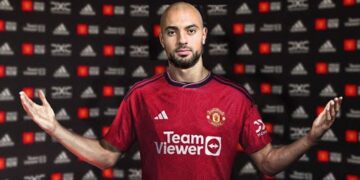
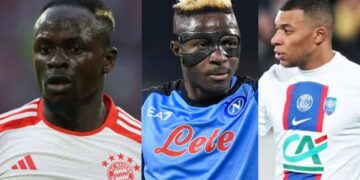
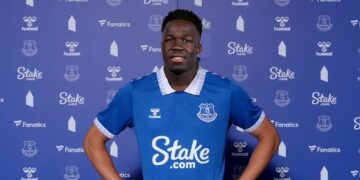
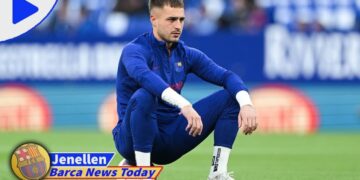
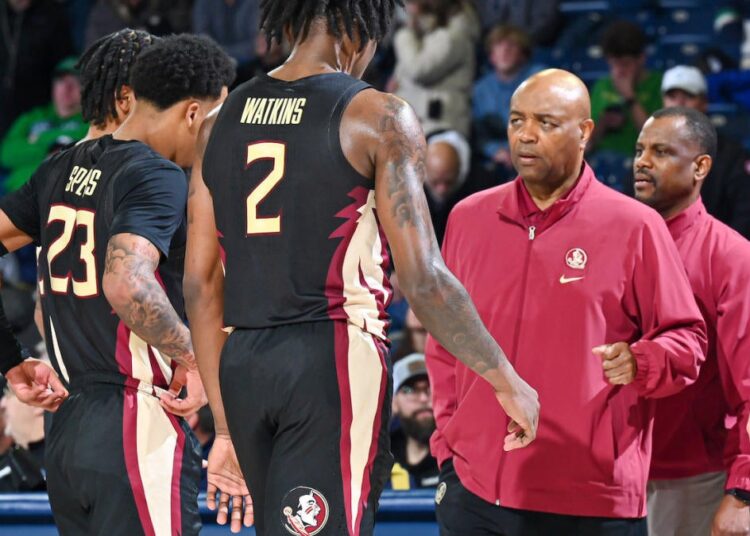















Discussion about this post